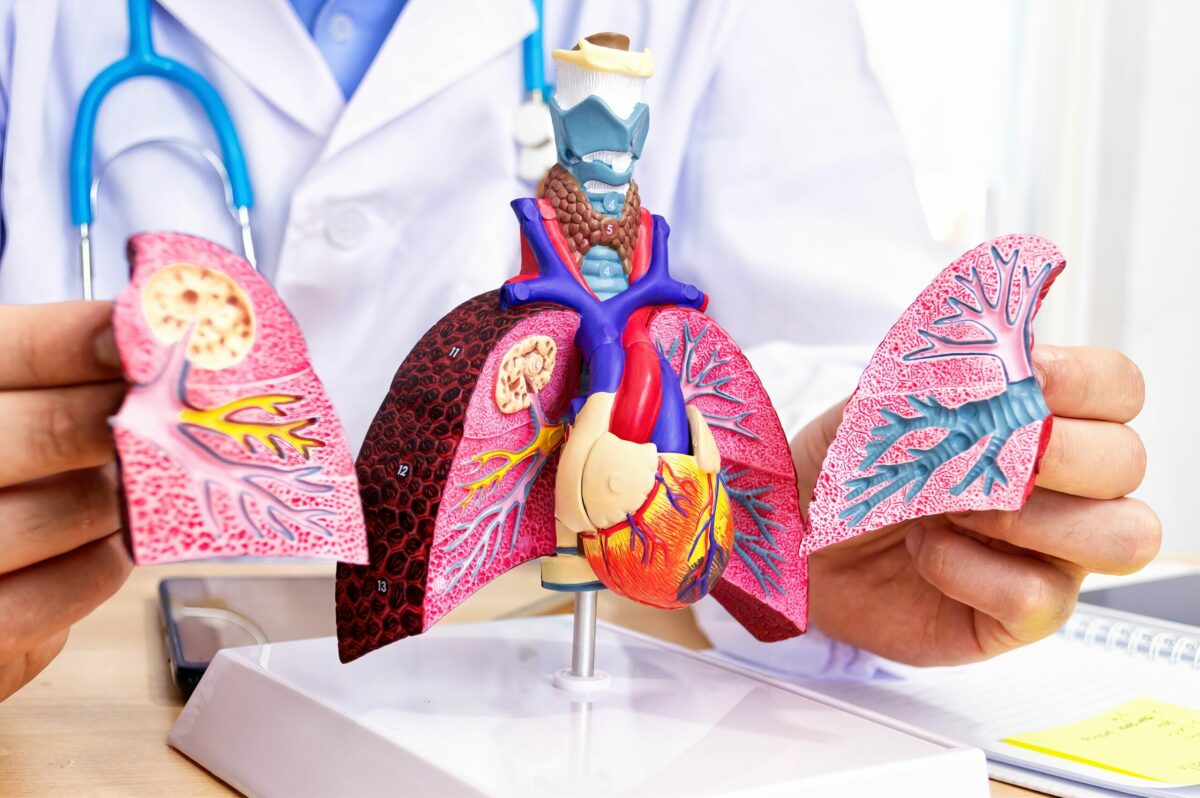Health conditions that impact your heart and blood vessels are called circulatory system diseases. These diseases make it difficult for blood to flow throughout the body. While some diseases may have certain symptoms, others are silent (asymptomatic). Chest pain, edema, heart palpitations, and breathing problems are the most common circulatory system disease symptoms.
What are Circulatory System Diseases?
All health conditions that negatively affect your heart or blood vessels are considered circulatory system diseases. Blood vessels and the heart work to supply your tissues and organs with oxygen. The circulatory system is also known as the cardiovascular system. If there is a problem with any part of your cardiovascular system, it may affect the whole system as well as the body. In any case, the circulatory system conditions can provoke different problems. For example:
- Heart pumping problems
- Certain changes in the heart’s structure
- Blocked or narrowed blood vessels
- Insufficient blood flow
- Weakened blood vessels
Cardiovascular system problems can develop over the years or appear suddenly. However, it is important to know all about things that may go wrong because it can help to understand treatment methods and notice the symptoms. In case you suspect you have a circulatory system disease, contact your healthcare professional.
Health Conditions that Affect the Circulatory System
Experts classified cardiovascular system diseases into big categories. For example:
- Cardiovascular diseases (these conditions usually affect heart/blood vessels)
- Vascular diseases (impact your blood vessels only)
Check below some of the most common diseases:
Aneurysms
This is a condition in which weak spots in the walls of the arteries expand like a balloon. If a person ignores this condition and leaves it untreated, it may lead to a rupture that provokes blood clots. Moreover, aneurysms can happen in any artery. Most diagnosed aneurysms are in the aorta (the biggest artery in the body). This aneurysm type is also known as aortic aneurysm and is categorized into two types. For example:
- Thoracic aortic aneurysm – This type usually appears in the aorta that is in your chest.
- Abdominal aortic aneurysm (AAA) – It occurs in the part of the aorta located in your belly. The AAA is more common than the first aortic aneurysm type.
Check below other aneurysm types:
- Splenic artery aneurysm – It commonly forms in the artery of your spleen.
- Popliteal aneurysm – Appears in the popliteal artery in the leg.
- Mesenteric artery aneurysm – Usually, it happens in the arteries that supply your intestines.
- Carotid aneurysm – Forms in the carotid arteries located in the neck.
- Cerebral aneurysm – Happens in the arteries in the brain.
Arrhythmias
An abnormal heartbeat or irregular heartbeat is an arrhythmia. In some cases, it starts in the upper chambers of the heart (atria) and it is called supraventricular arrhythmias. However, atrial fibrillation is the most common type of arrhythmia.
In other cases, it may start in the lower chambers (ventricles). Such cases are called ventricular arrhythmias (ventricular fibrillation) and this arrhythmia type is life-threatening because it may lead to sudden death.
If the heart cannot contract and relax normally, it is considered a person has arrhythmia. Thus, the heart cannot work properly.
Atherosclerosis
This is a disease in which plaque builds up in the arteries. After that, it narrows the arteries, which makes it difficult for blood to flow through. It is considered a serious health condition because a rupture of the plaque can cause blood clots. If you have atherosclerosis, you are at higher risk of developing other health conditions. Examples include:
- Peripheral artery disease – The plaque that builds in the arteries goes through the arms and legs.
- Coronary artery disease (CAD) – This health condition is one of the most common causes of myocardial infarctions. CAD is a condition in which plaque builds up in the arteries that supply your heart with blood.
- Carotid artery stenosis – A plaque builds in the arteries (located in the neck) that supply your brain with blood.
Blood Pressure Diseases
The blood pressure shows how fast the blood flows through blood vessels. However, if the blood pressure is too low or too high, it provokes certain health problems. Check below for some blood pressure conditions:
- Hypotension (low blood pressure)
- Hypertension (high blood pressure) – Usually, this condition is asymptomatic and it is called a silent killer. However, experiencing high blood pressure for long periods can provoke certain health problems.
- Portal hypertension – Increased blood pressure occurs in the arteries that carry blood from the intestines to the liver.
- Pulmonary hypertension – In such cases, there is elevated blood pressure in the arteries that carry blood from the heart to the lungs.
Cardiomyopathy
A group of diseases that negatively affect your heart muscle is called cardiomyopathy. These conditions affect the heart’s ability to pump blood. Check below some examples:
- Peripartum cardiomyopathy – A condition in which the heart weakens late in pregnancy or soon after delivery.
- Hypertrophic cardiomyopathy – Heart muscle gets thicker.
- Dilated cardiomyopathy – Chambers of the heart become bigger.
Congenital Heart Disease
This group of heart conditions happens to babies when they are born. In some cases, these diseases are heritable (that pass from parents to children). However, congenital heart diseases may appear even without a family history. Therefore, approximately 1 in 100 people suffer from congenital heart disease. Check some examples below:
- Truncus arteriosus – In normal circumstances, the blood is carried by two arteries from a baby’s heart (aorta and pulmonary artery). However, not for those who suffer from this congenital heart disease type.
- Tricuspid atresia – Tricuspid valve is missing.
- Tetralogy of Fallot – Certain defects prevent the newborn from getting enough oxygen-rich blood.
- Pulmonary atresia – The pulmonary valve is missing or blocked.
- Patent Ductus Arteriosus (PDA) – If a baby experiences this condition, an opening between the aorta and pulmonary artery occurs. However, it should have closed at birth.
- Hypoplastic left heart syndrome (HLHS) – The baby’s left side of the heart is underdeveloped.
- Dextro-Transposition of the great arteries (d-TGA) – In this condition, the aorta and pulmonary aorta are switched.
- Coarctation of the aorta – Certain parts of the baby’s aorta are narrowing.
- Bicuspid aortic valve – The aorta valve contains two flaps but normally are three.
- Atrial septal defect and ventricular sptal defect
Heart Failure
In case your heart does not work correctly, a heart failure may happen. As a result, the organs and other body tissues do not receive oxygen. However, approximately 6 million people in the U.S. have heart failure. Furthermore, this is a progressive heart condition and can get worse over time. Congestive heart failure is the latest stage of heart failure.
Heart Valve Disease
This condition often impacts any of the heart valves. The heart contains 4 separate parts that help to manage blood flow and a valve condition strins the heart muscle. Moreover, heart failure and sudden cardiac death are some complications of heart valve disease that may occur over time. Check below the most common heart valve diseases:
- Mitral valve regurgitation
- Aortic valve stenosis
- Aortic valve regurgitation
High Cholesterol
Hyperlipidemia or high cholesterol levels in the blood can provoke serious health problems (such as health conditions). If there are persons who experience increased cholesterol levels, they are at higher risk of developing myocardial infarction, coronary artery disease, and others.
Stroke
This health condition is considered an emergency and it can be life-threatening. Stroke commonly occurs when blood flow to the brain stops. Check below some stroke types:
- Transient ischemic attack (TIA) – This condition causes a temporary block of blood flow to the brain. However, TIA is often a symptom of ischemic stroke.
- Hemorrhagic stroke – A bleeding in the brain occurs, which blocks the brain cells from getting blood.
- Ischemic stroke – In such cases, there is a blood clot that blocks the artery that supplies the brain with blood.
Vasculitis
This health condition usually impacts your veins, arteries, or capillaries. It happens due to an overactive immune system, which causes inflammation of the blood vessels. Thus, the inflammation can narrow or block the blood vessels. This effect may lead to weakened blood vessels and aneurysm.
Venous Disease
Several health conditions that affect the veins are called venous diseases. Through veins oxygen-poor blood returns to the heart. In severe cases, the blood flow through veins is completely blocked. Check some common venous diseases:
- Chronic venous insufficiency (CVI)
- Deep vein thrombosis (DVT) – A person experiences in one of the deep veins a blood clot, which can break and travel to the lungs causing a pulmonary embolism. Deep veins means that veins that are not on the surface of the skin and you cannot see them.
Frequently Asked Questions
What are the common symptoms of circulatory system diseases?
Check below some common symptoms:
- Dyspnea (shortness of breath)
- Fatigue
- Fainting
- Edema (swelling)
- Irregular or forceful heartbeat (heart palpitations)
- Dizziness
- Angina (chest pain)
What are common treatment options for cardiovascular system conditions?
Mostly, physicians prescribe drugs, procedures, and surgery in the treatment of circulatory system conditions. Examples include:
- Beta-blockers
- Anticoagulants
- ACE inhibitors
- Diuretics
- Statins
- Calcium channel blockers
In some cases, surgery or specific procedures are required. Examples include heart surgery, minimally invasive heart surgery, percutaneous coronary intervention (also known as coronary angioplasty), and others. Ask your healthcare provider if you have any questions.
How to prevent circulatory system diseases?
The tips listed below can reduce the risk of cardiovascular system conditions. Examples include:
- Adopt a heart-healthy diet
- Regular aerobic exercise
- Quit smoking or any tobacco products
- Do not use recreational drugs
- Limit or avoid large amounts of alcoholic drinks
Consult with your healthcare provider for more details.




